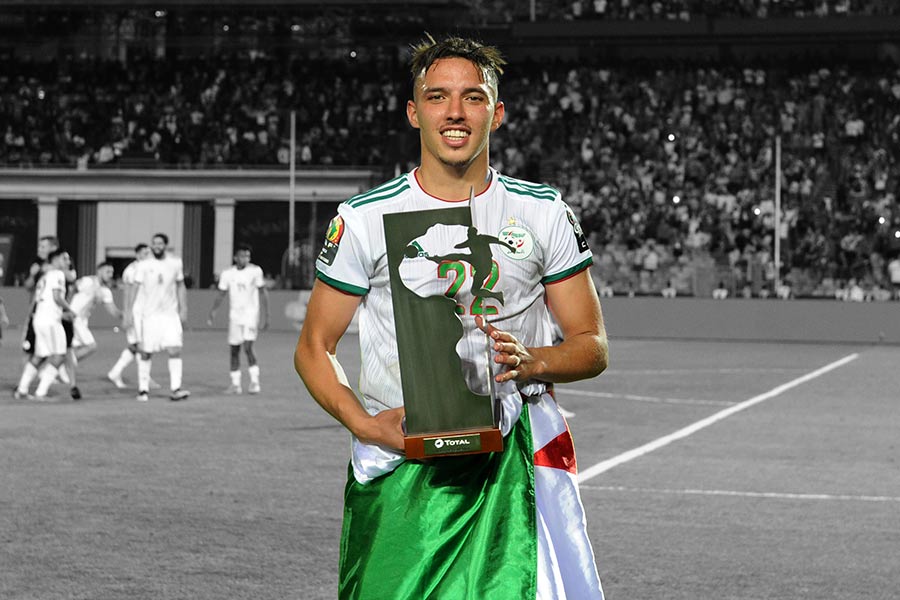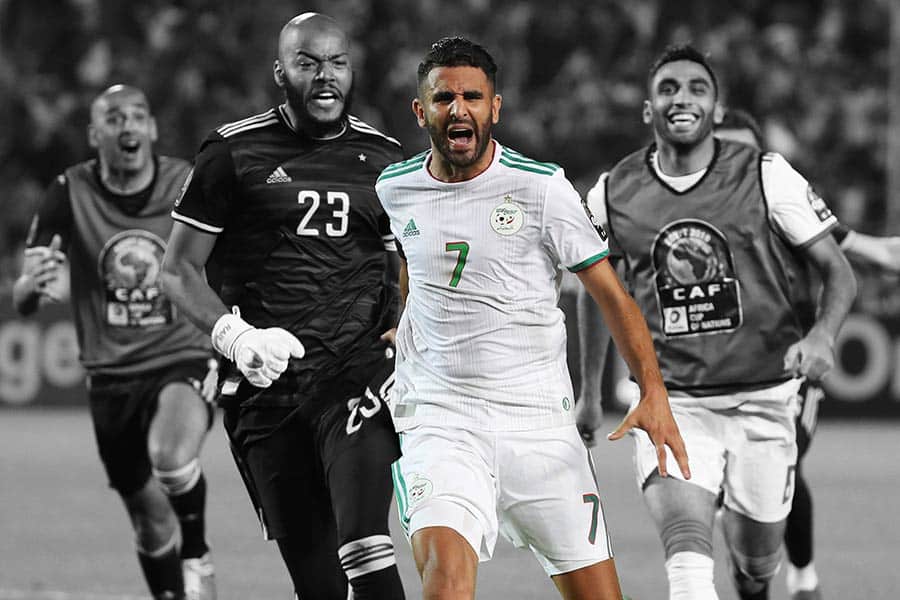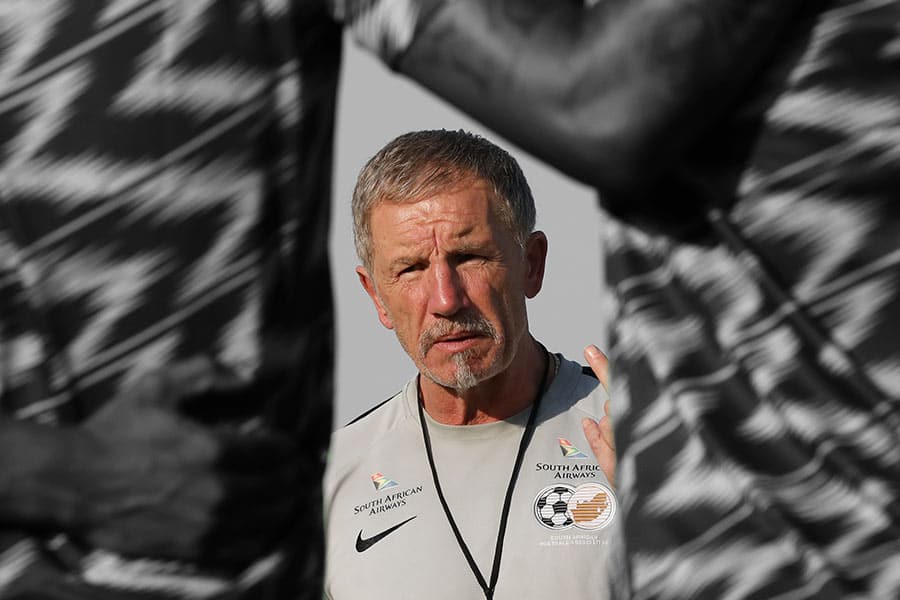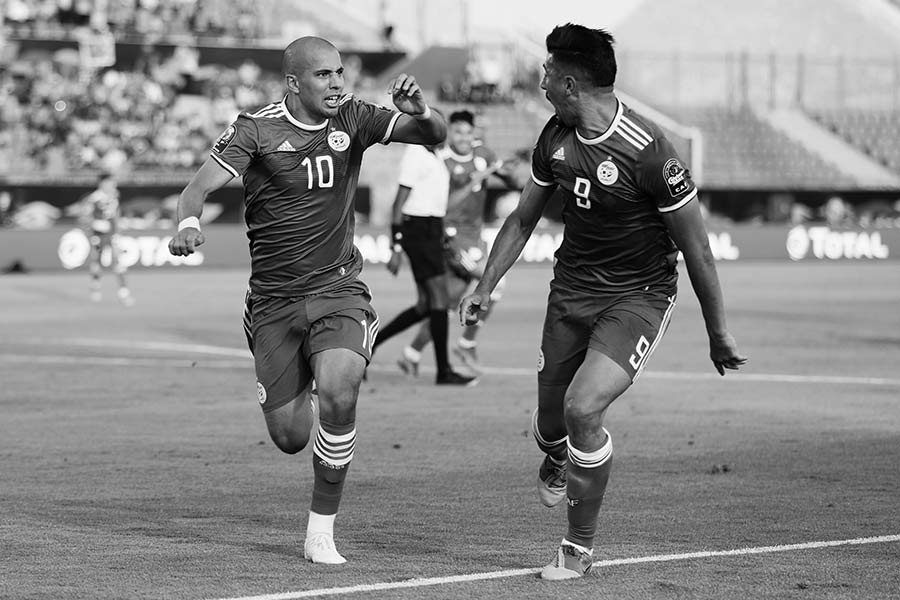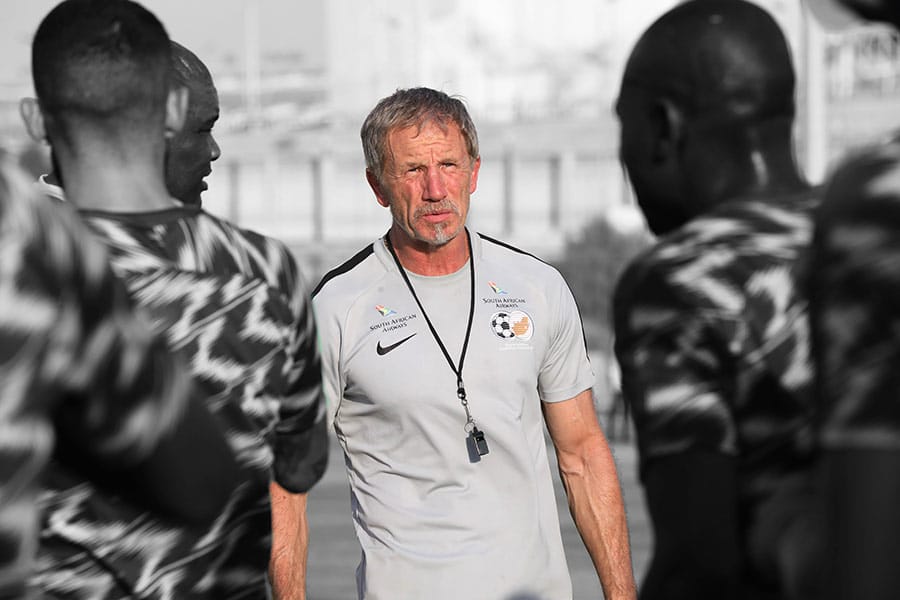
28 June 2019, by: Grant de Smidt
SOUTH AFRICA V NAMIBIA AFCON 2019: TACTICAL PREVIEW
We preview South Africa v Namibia at Afcon 2019. Bafana are looking to bounce back in a regional derby against Namibia, can Stuart Baxter find solutions to break down organised, defensive opponents?
BET: South Africa v Namibia
BET: BET BOOSTS South Africa v Namibia
South Africa’s first game ended in a 1-0 defeat, which was not a wholly unexpected result considering the less disrupted preparation enjoyed by the Ivorians or the quality of players in their ranks, including Wilfried Zaha on the bench. The latter played only one of the side’s six AFCON qualifiers and he provided a microcosm of the greater strength in depth possessed by Cote d’Ivoire.
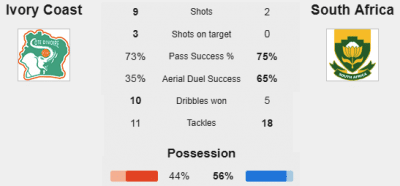
The biggest disappointed from the opener was how toothless Bafana looked in a surprisingly narrow midfield setup. With only two shots attempted and none on target, Baxter’s men never looked like scoring from open play.
With only five dribbles made, there was little way for the side to eliminate opponents with the lack of wingers in the squad proving a real limitation for the coach – Bafana desperately lacked width in their play.
With a dearth of wide men performing in local football (and Keagan Dolly out injured), Baxter’s hands were tied to an extent but perhaps Vincent Pule of Orlando Pirates or even Thapelo Morena of Mamelodi Sundowns could have stretched play more for his side at this tournament.
South Africa dominated possession in both halves of the match. With the pace in wide areas possessed by Cote d’Ivoire, they were happy to invite Bafana onto them and then use Nicolas Pepe and Max Gradel to exploit any breaks.
With Baxter’s success in local club football never based on trying to play out from the back, it was curious to see his side focus on various schemes when Ronwen Williams had the ball, including long diagonals to both fullbacks, and using Dean Furman to start attack by receiving the ball out towards the right touchline. That was a move with no clear upside.
In the opening game for Brave Warriors, they defended resolutely but eventually went down to an 89th-minute own goal after constant pressure from Herve Renard’s Morocco team. Namibia started in a 4-4-2 formation. In goal was Lloyd Kazapuwa, preferred to Golden Arrows’ Maximilian Mbaeva, with former Kaizer Chiefs goalkeeper, Virgil Vries not in the final squad.
Rian Hanamub was at left back, whilst former AmaZulu and Highlands Park man, Larry Horaeb at the right fullback. Ryan Nyambe of Blackburn Rovers, making his competitive debut for his country, and Highlands Park’s Denzil Haoseb were in central defence.
In central midfield, were Manfred Starke and captain, Ronald Ketjijere, formerly of University of Pretoria. On the flanks were Deon Hotto of Bidvest Wits and Petrus Shitembi, who has played for numerous South African clubs; most recently he was at Stellenbosch FC. In attack, Highlands Park’s Peter Shalulile was partnered by Absolom Limbondi. The majority of the squad have played in South Africa and will have a real point to prove coming up against Bafana Bafana.
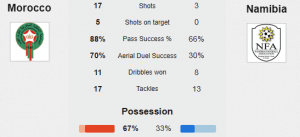
The match stats from their opener give an indication of just how much pressure they were under. Morocco had two thirds of the ball and 17 shots at goal, albeit with 10 coming from outside the area as Namibia defended their box brilliantly, playing with a very deep line and not allowing any space to get in-behind. Their attempts to play the ball forward quickly never bore fruit, as they lost 70% of their aerial duels.
A key factor in this match will be how well Bafana Bafana can control Deon Hotto. The Bidvest Wits left winger provided the most assists in the ABSA Premiership last season (14) and will come against his club teammates, Thulani Hlatshwayo and Buhle Mkhwanazi. His direct competitor will be Thami Mkhize, who missed both games against Hotto last season in the PSL.
In the opening match, Namibia used Hotto on the left of a midfield four, but he struggled to impose himself on the game at all. He delivered no crosses and made no dribbles as Morocco drove him back into defensive positions by pushing fullback Nabil Dirar forward. At club level, Hotto is a very dangerous dribbler and a superb crosser of the ball. Should Manetti bring in target man, Benson Shilongo, then that will be a very real weapon that Bafana needs to control.
From the opening game, there are two clear weaknesses in the Namibian side defensively. Firstly, Morocco got significant joy by overloading their left by attacking right back Horaeb and forcing Shitembi to drop back to help.
Regularly, interplay up that flank saw a three versus two advantage as right-footed left back, Achraf Hakimi linked up with Nordin Amrabat, with number ten Mbark Boussoufa moving wide. This saw a number of situations where Hakimi got to the byline but struggled to find the final pass on his weaker foot. South Africa could repeat this trick by getting Sifiso Hlanti forward into advanced areas.
The other real weak point is the central midfield duo, who had major problems protecting a large area in front of such a deep back four. On numerous occasions, Hakim Ziyech came in off the right flank to find space behind the Namibian pairing. Two examples of Namibia struggling to control the space behind, and to the sides (in the half-spaces) of Ketjijere and Stark are below.
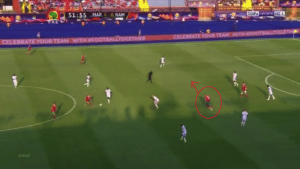
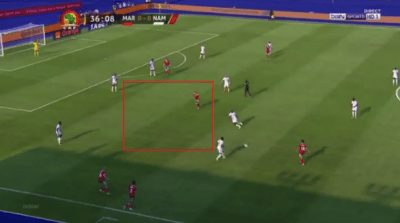
In Bafana’s first game, almost all of the best openings came from dead-ball scenarios. Thulani Hlatshwayo went close on a couple of occasions, and there was an inventive training ground routine seen where the angle was changed by a sideways pass to Kamohelo Mokotjo, who then found a back post run by the captain with a diagonal pass.
Namibia looked very susceptible from freekicks in the game against Morocco, with several headers won in the box by the North Africans and the 89th minute winner eventually arriving from an own goal after a lateral freekick. In their final qualifying match, Zambia beat them 4-1 with three of the goals coming from corners. Both Percy Tau and Sifiso Hlanti possess excellent dead-ball delivery and drawing freekicks in what could be a physical Southern African derby match, could be a wise strategy.
South Africa had one less rest day compared to Namibia and after such a long period without competitive minutes for many players, and the 36-degree heat in Cairo on Monday, Baxter could freshen up his side.
Having used a 4-2-2-2 formation at the start against Cote d’Ivoire and then later going to 4-2-3-1 to chase the game, it is not certain how the side will be set up. Sibusiso Vilakazi had a strong cameo from the bench in that game and could replace Lebohang Maboe. This would likely see Tau in a less-suitable wider role, with Vilakazi behind Lebo Mothiba.
The side could also do with some enforced fresh legs in central midfield as Furman has been ruled out with a knee injury, so despite Mokotjo’s underwhelming outing in the opener, he should keep his place. The ability of Hlompho Kekana to switch play, or hit 40 yards passes into the channels for runners, makes him well suited to this game; one where Bafana are likely to dominate possession. Bongani Zungu is also a favourite of the coach and could push for a starting berth.
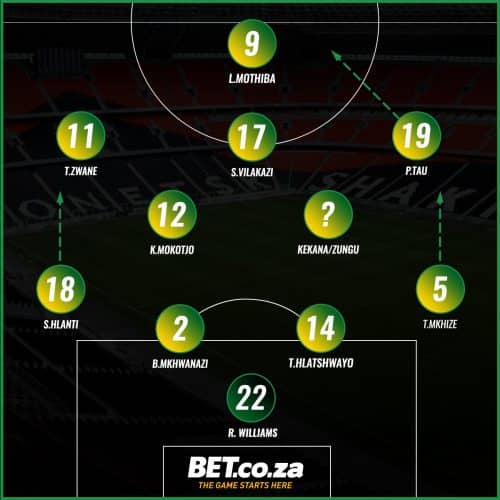
Despite the lack of pre-tournament friendlies and the searing heat on Monday, Baxter only made two changes. He has regularly failed to trust his full bench since taking over. Despite chasing that match, PSL Football of the Season, Thembinkosi Lorch remained unused. He would be an ideal specialist for breaking down a team who defend deep but allow space between-the-lines.
Namibia’s coach, Ricardo Mannetti spoke after the opener, saying: “I’ve seen throughout the world people have a problem with defensive football. But you need to ask yourself, first and foremost, why that specific team is playing defensively; why are they not opening up?”
Namibia realised that pushing more men forward would have seen the side exposed by Morocco. For this game, he may see Bafana Bafana as beatable and play slightly more adventurously, which would suit Baxter’s side.
This is likely to be a game where South Africa have 60% possession or more. They will need to find greater width and depth to their play, switch play more often, shoot more regularly (and occasionally from long range) and combine more effectively between-the-lines. The introduction of Kekana and Vilakazi would bring those required skills to the table and they look to be the players that the coach should call upon.
Defensively, keeping one fullback deeper at a time, and having Mokotjo anticipate counter attacks would mitigate the risk on the break of Hotto and the pacey Shalulile, Namibia’s two best players and ones which excelled in the PSL last season.
Falling behind would be a disaster for Baxter’s men as they simply had no real experience of chasing games in qualifying and they possess a coach who has not shown much invention in his substitute usage. This is highlighted by the use of route one football to Lars Veldwijk as the only fall-back.
A win for South Africa would give the side a good chance of progressing with a draw against Morocco in their final game, although even three points could be enough to go through as one of the four best third-placed teams.
BET: South Africa v Namibia
BET: BET BOOSTS South Africa v Namibia
BET: AFCON 2019
BET: AFCON Golden Boot
Open your BET.co.za account today and get a 100% deposit match on your first deposit up to R1000!


















